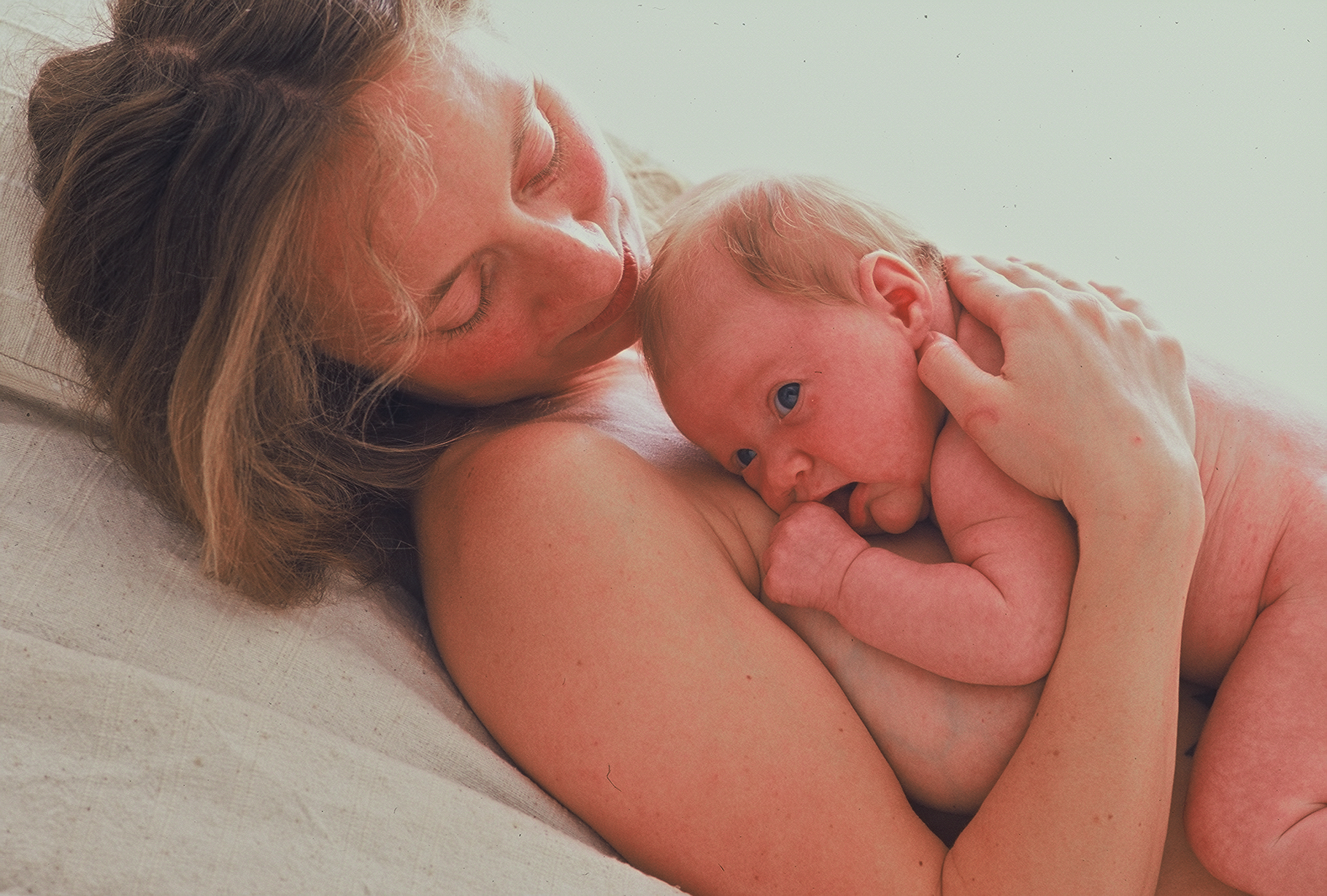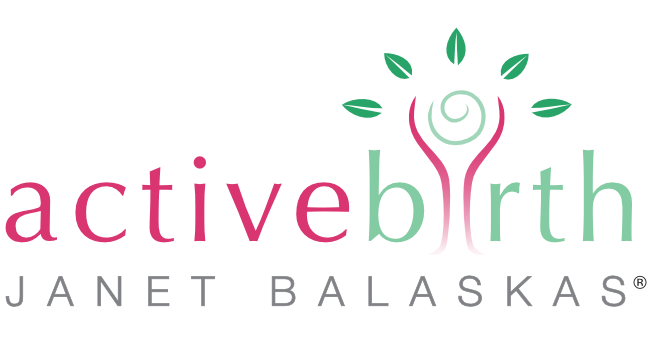
Mother nature gives each baby an incredible gift for future health with a final transfusion of blood from the placenta in the first minutes following birth. The placenta at the time of birth contains about one third of the baby’s blood volume and is rich in nutrients, iron and oxygen, stem cells, T cells, immune factors, Vitamin K and more… its like an incredible ‘packed lunch’ to help the baby adapt to life outside the womb and to take a legacy of health and resilience forward into the future. So, unless it’s absolutely essential on medical grounds, why be in a hurry to clamp or cut the cord until it finishes pulsating spontaneously and maybe even longer?
When the cord is not cut right away the baby will benefit from two sources of oxygen before independent breathing is established, and will have more blood going to the lungs and all the tissues and organs which begin to function after the birth. Stem cells (which are sort of master cells that can become any cell needed in the body) are there to supply the organ systems for respiration, digestion, skin, and excretion as needed. It may not be in the best long term interests of the baby to harvest these stem cells and store them in a blood bank.
“All the evidence shows that the best bank for that blood is the baby (Diaz-Rosello 2006).”
There are also all the emotional benefits from undisturbed and uninterrupted first contact between mother and baby. This gives rise to very high levels of the hormones that ensure an optimal start to bonding and breastfeeding – oxytocin, endorphins and prolactin – the mothering hormone.
Unless it’s absolutely essential on medical grounds, why be in a hurry to clamp or cut the cord until it finishes pulsating spontaneously and maybe even longer?
The placenta during pregnancy
The placenta plays a key role from the very beginning of your baby’s life. It originates from the first cluster of cells that divide to form the baby (embryo) as well as the membranes and the placenta in the womb. So essentially, in utero, the whole baby includes the placenta.
Throughout the pregnancy the placenta produces hormones that maintain the pregnancy and transfers nutrients and oxygen to the baby from the mother’s blood stream and returns waste via the same route. It is linked to the baby through the three blood vessels of the umbilical cord: one vein and two arteries, transporting blood from the placenta to the baby and back again.
It’s no exaggeration to say that the placenta is the vital link between the baby and the mother during the pregnancy and enables her to ‘eat, breathe and excrete for her baby’.
How did the custom of cord severance begin?
Immediate clamping and cutting of the cord is a custom used routinely with the medicalisation of birth. A good example is the routine induction of the third stage with an intramuscular injection of syntometrine. In such a case, the cord is cut immediately while it is still pulsating with blood, to stop the drug in the mother’s bloodstream getting through to the baby. The cord is clamped first, simply to prevent messing up the bed when the cord is cut! Another reason might be if the baby needs urgent medical attention. However there is no physiological need to clamp the cord as it will clamp itself naturally when the placental circulation ceases.
Leaving the cord intact
By contrast, in a natural or physiological third stage, when mum has high levels of her own hormones, she does not usually need any intervention to safely birth her placenta. All she needs is continuous uninterrupted skin contact with her baby, in a very warm and private environment and to relax back undisturbed, with baby lying on top of her body, close to the breast. Baby will nuzzle around (using an innate reflex to ‘crawl’ and bob its head) and soon find the breast and latch on spontaneously. This will stimulate high levels of the ‘love’ hormone oxytocin that not only activates the muscular walls of the tiny milk producing cells, but also stimulates strong contractions of the uterus so that the placenta will detach. In due course the uterus will expel the placenta as it continues to retract down after the birth (within one hour it is about the size of a grapefruit, back in the pelvis – amazing!)
These strong contractions of the uterus cause the little blood vessels at the placenta site to seal themselves off and prevents abnormal blood loss. All this while mother and baby are meeting for the first time and falling in love – thanks also to the exceptionally high levels of natural hormones of attachment and love which peak at this time.
The last thing we need to do is to disturb the natural interactions between mother and baby that ensure ‘bonding’ as well as the safe birth of the placenta, which marks the end of the birth. In fact until the placenta is born, mum can still be considered to be in labour. Keeping very warm and maintaining privacy are important here. Even a phone call to relatives could cause excitement and affect the hormonal balance.
If we wait before cutting the cord for it to stop pulsating spontaneously (takes about 10-20 minutes) we can be sure that baby gets the full benefit of the placental transfusion while at the same time, learning to breathe independently through its own lungs. In fact baby will regulate the amount of blood taken from the placenta and send back any surplus that is not needed. Once this process of equilibration has reached completion, the cord naturally stops pulsating. It’s obvious because it becomes flaccid and empty and looks white and seems to clamp itself.
The last thing we need to do is to disturb the natural interactions between mother and baby that ensure ‘bonding’ as well as the safe birth of the placenta, which marks the end of the birth. In fact until the placenta is born, mum can still be considered to be in labour.
In fact, if you give birth naturally, why not wait until the placenta is born and have some time with baby and cord intact after that, while the baby self-attaches to the breast. Just lie back comfortably in a very warm room after the birth and place your baby ‘skin-to-skin’ on your body and he or she will know instinctively how to find the breast. The placenta can be placed on your thighs on a towel or in a little dish beside you, without cutting the cord just yet. The warmth from your body is the best way to keep your baby at the right temperature. A soft cloth can be placed over the baby’s body but not in-between you!
You can stay like that for as long as you want, ideally for the first hour after giving birth.
You have options
Most people do not realise that there are several options for managing this stage of the birth, usually called the third stage, and also for what you want to do with the placenta after the birth. If you are keen for your baby to get the benefit of the placental transfusion you can simply wait until the cord stops pulsating before cutting the cord. There is no hurry. After the cord is cut the usual procedure is for the midwife or hospital to dispose of the placenta. Some people are quite comfortable with this, while others prefer to keep and bury the placenta in the garden and perhaps grow a beautiful plant over it.
There is also the option to have the placenta freeze dried, powdered and encapsulated after the birth and take in the remaining nutrients yourself as many other mammals do. Sometimes a ‘smoothie’ is prepared for mum with a little of the fresh placenta, fruit and yoghourt and the rest dried and encapsulated. Homoeopathic remedies can also be made from the baby’s placenta for use later in life.
Or, if you want to go all the way, you can even leave the cord intact to sever naturally, which it will do in a few days. This is called ‘lotus birth’. A special bag is prepared by the mother before the birth to wrap the placenta in and keep it close to the baby until the cord dries up and falls off. The placenta is preserved in a mixture of salt and herbs. (see references below for the websites with more information about placental encapsulation and lotus birth.)
Routines and recommendations
The UK Resuscitation Council now officially recommends a delay of at least one minute before the cord is clamped to allow some of this precious transfusion to reach the baby – even when birth has been induced. Apparently a significant amount of the placental transfusion passes to the baby in the first minute or two. Similar recommendations are being made in Europe and the US as research is revealing the benefits. Many hospitals are waiting 1-3 or even 2-5 minutes as a routine. This means that almost all babies can benefit from the placental transfusion to some degree.
Some doctors, aiming to make a Caesarean section as much like a natural birth as possible, will agree to remove the baby and the placenta without severing the cord, keeping the placenta by the mother’s side for a little while before cutting the cord. Provided baby does not need medical attention, he or she can be placed skin-to-skin across the mother’s chest – making the most of the precious time of connection after the birth. My next article will be about having such a ‘natural’ caesarean.
So – why not talk to your birth attendants and give this precious gift to your baby? You can see and feel when the cord is no longer pulsing – it’s obvious – and even then there is no hurry. This is mother/baby love – the prototype for all the love relationships of a lifetime and at these moments when mother and baby are transfused in the ‘love’ hormones of birth – oxytocin and endorphins – its best if we to do nothing to disturb or disrupt this precious time.
This is the most powerful way to ensure physical and emotional health in the future and it is every baby’s birthright. Remember birth is not over until the placenta is born, the baby is suckling at the breast and the cord is no longer pulsing.
Sometimes however, circumstances are such that all of the above is not possible. When this happens, its important to know that you can still get a lot of benefit from recreating this closeness with your baby in a warm room, skin-to-skin any time and as often as you like. Breastfeeding, using a soft baby carrier a lot of the time in the early weeks, and having plenty of body contact and cuddles – all of these activities stimulate the release of ‘love’ hormones and promote bonding, health, resilience and happiness.
Read my blog about ‘Laid Back’ Breastfeeding for more suggestions or come to one of my courses to explore natural birth physiology in detail.
Here are some of my favourite quotes:
The benefits of delayed cord clamping
“When I am asked
‘Why don’t you cut the babies umbilical cord?’
I say, ‘isn’t the real question: Why do you cut?’
It’s interesting that those of us on the path of nonviolence are being asked
to justify our peaceful non-interventions, by the perpetrators of intemperate
protocols.”
Ibu Robin Lim, CPM. Ubud Bali – ‘Placenta the Forgotten Chakra’
‘Another thing very injurious to the child, is the tying and cutting of the navel string too soon: which should always be left till the child has not only repeatedly breathed, but till all pulsation in the cord ceases. As otherwise the child is much weaker than it ought to be, a portion of the blood being left in the placenta, which ought to have been in the child.’
Erasmus Darwin 1801,Grandfather of Charles Darwin
As quoted by Dr Sarah Buckley – ‘Gentle Birth, Gentle Mothering”
Further reading about the placenta, its uses and benefits:
Placenta the Forgotten Chakra – Robin Lim
Placenta the Gift of Life – Cornelia Enning
Resources
Placental Encapsulation: Independent Placenta Encapsulation Network (IPEN)







Thanks for this wonderful article which I will share with pleasure on my facebook page Elementalbirth Yoga
Have a look at his about ‘natural’ CS: http://cord-clamping.com/2012/07/29/birth-story-woman-centred-emergency-c-section-with-delayed-clamping/